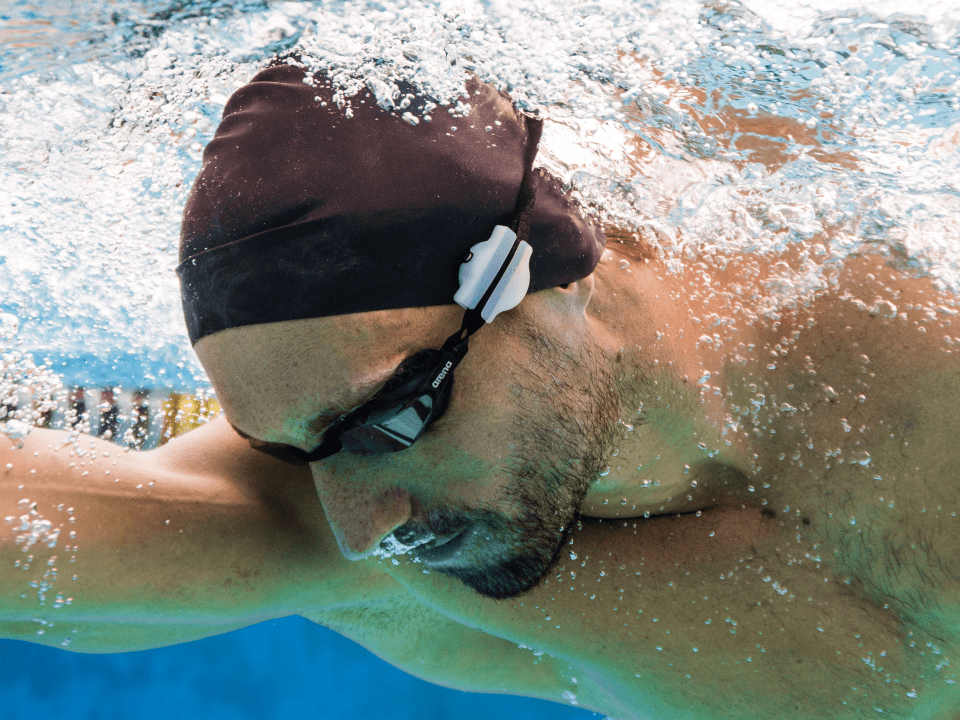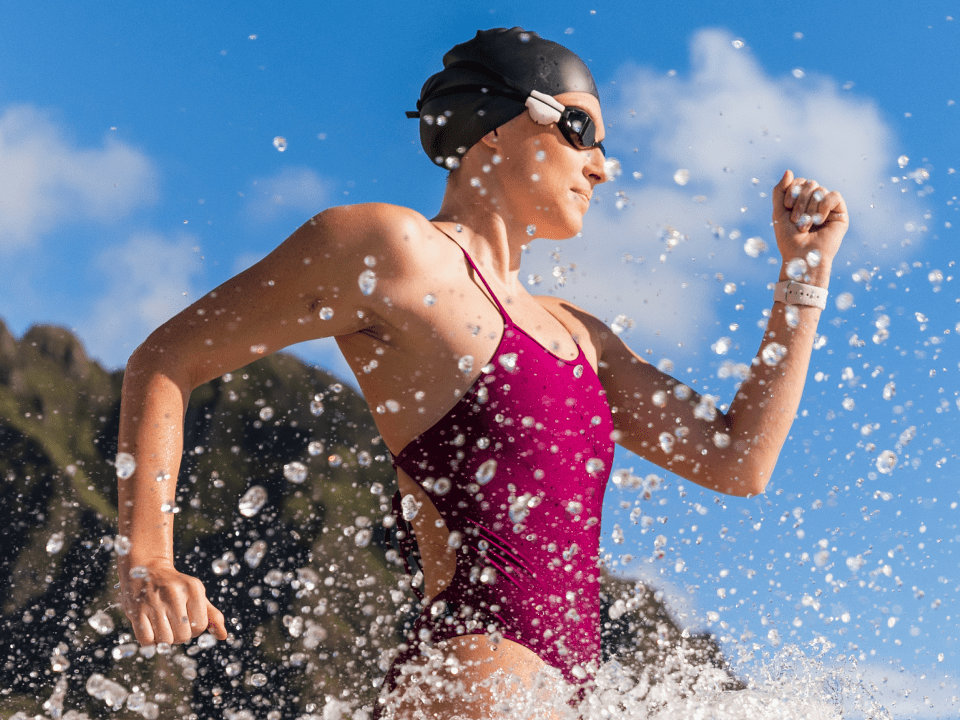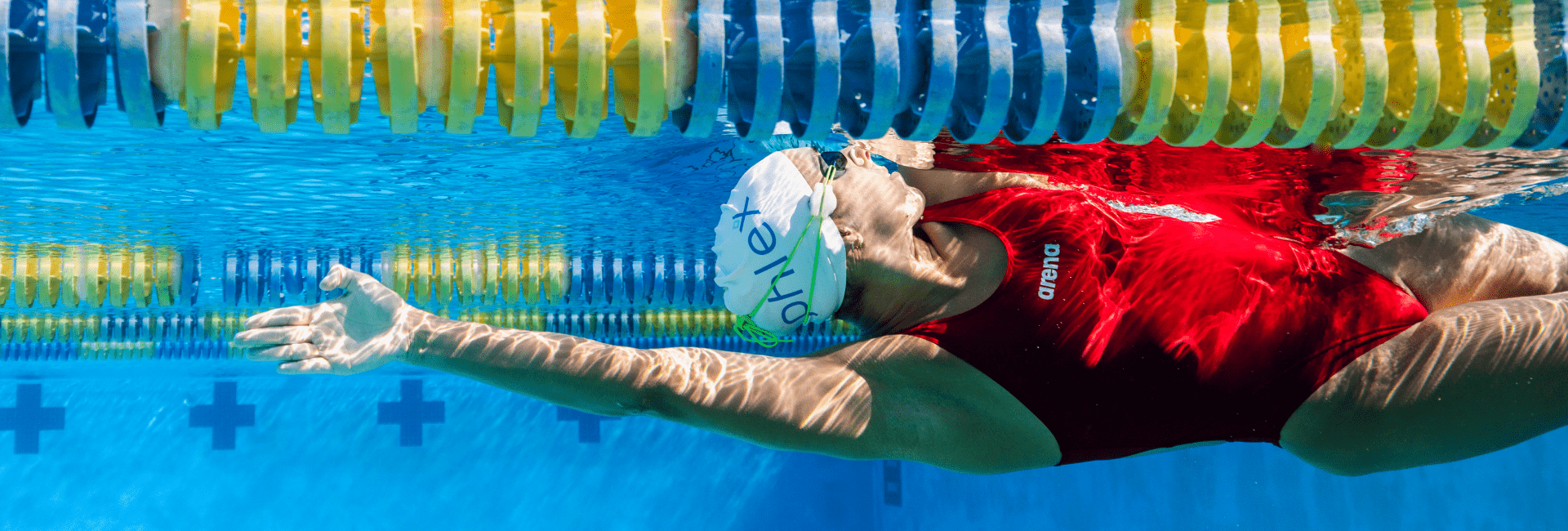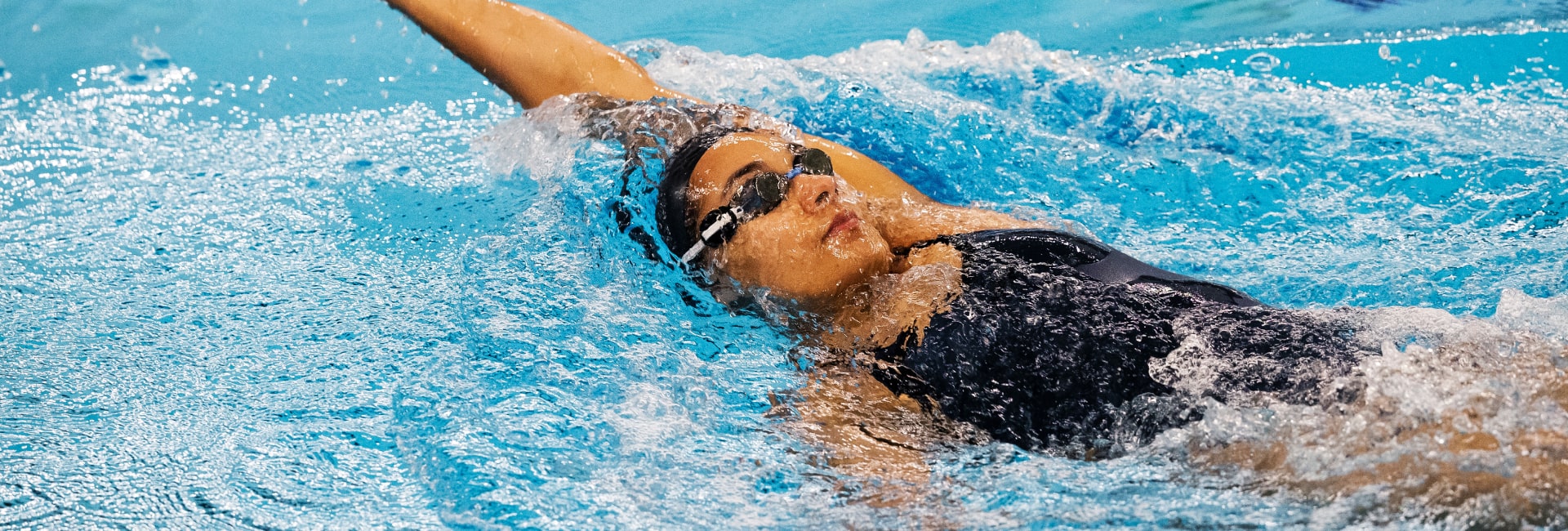Runners do it. Cyclist do it. But do swimmers benefit from wearable technology? Of course! Big time! Swimming tech often gets forgotten, but just a tiny sensor attached to your goggles can provide invaluable insights on key metrics, heart rate, and swimming technique. Find out what can help you enhance your swimming and personalize your training.
Swimming, like running, is a demanding sport that requires a combination of strength, endurance, and technique. Physiology is complex and, in water sports, difficult to monitor. Yet, it’s the deciding factor when it comes to performance and improvement. Without objective data and monitoring tools, the risk of overtraining or under training is higher.
Like runners, swimmers can improve their performance by measuring a heap of metrics to individualize training, improve technique, and track progress. All you need is to collect the data and the right system to analyze it.
The potential of swim tracking technology is such that World Aquatics—the governing body of international competitions in water sports—recently announced a rule changed allowing data collection devices during competitions. As soon as they get out of the water, professional swimmers will be able to see an in-depth analysis of their performance.
Swim tracking technology, however, isn’t just for the pros. For years, the tools available to swimmers and coaches have been limited, but not anymore. Several new companies and startups are offering innovative tools for swimmers to analyze their performance and track their progress.
Phlex is one of those companies. The company’s swim tracking technology provides an incredibly accurate and detailed picture of a swimmer’s performance, which can be used to improve technique and performance. For coaches and teams, Phlex offers a simple way to individualize training, give customized feedback and build a comprehensive confidence picture of each athlete. Avid swimmers, triathletes, and even beginners can look at the data presented by Phlex to track their progress, improve their technique and performance, and stay motivated.
Accurate heart rate tracking… in the water, too.
The Polar Verity Sense optical heart rate sensor is core to the Phlex system. This device is ideal for swimmers because you can attach it to your goggles with a handy and comfortable strap clip, so the sensor can measure heart rate from the temporal artery. When swimming, this method of tracking heart rate is more accurate than a watch as arm musculature and motion don’t interfere with the sensor. Additionally, Verity Sense records distance, pace, and turns in the pool—you just keep swimming.
Phlex connects to Verity Sense and process the data the sensor gathers to offer in-depth analysis of each training session. Phlex tracks over 30 different metrics during every workout that is swum with the device. The system presents these metrics organized in three key training areas: readiness and training load management, technique trends, and fitness level.
In the pool or open waters, swim tracking technology benefits all types of swimmers because it allows a more personalized approach to training and can offer guidance that it’s unique to each swimmer.
In the pool or open waters, swim tracking technology benefits all types of swimmers because it allows a more personalized approach to training and can offer guidance that it’s unique to each swimmer. A tool like Phlex personalizes the analysis of each swimmer by creating (and continuously updating) a baseline of their physiology and technique. The baseline consists of finding each athlete’s maximum heart rate and creating training zones based on their speed at each heart rate zone. In other words, it offers swimmers the benefits of heart-rate training.
By using Polar Verity Sense to record their training sessions, and analyzing the data with Phlex, athletes can see their heart rate response to each training zone. With this data, coaches — or the athletes themselves — can adjust their training plan and ensure they train at the right intensity.

Load management and readiness
As coaches and swimmers can track training according to objective data, they can plan day-to-day according to the body’s condition on any given day. With objective data in hand, planning training and making proper adjustments will be easier instead of relying just on the rate of perceived exertion.
Phlex calculates training load by factoring in variables like distance, intensity, and prior strain on the body. This can help coaches an athletes to keep track of the right amount of training, prevent overtraining and injuries, or avoid doing an unproductive workout.
Swimmers of all levels can see an in-depth analysis of each session. It allows them to track their progress over time, identify areas for improvement and make adjustments to their technique, and it also helps them stay motivated to achieve their goals. Phlex is way to understand everyone’s unique physiology and train within their own personal training zones, making it easier for them. The most experienced swimmers identify areas for improvement and make adjustments to their technique, and it also helps them stay motivated to achieve their goals.
Ready to dive?
Similarly to what happened in the running world with sports watches, swim tracking technology is quickly becoming an indispensable resource for both swimmers and coaches, and has the capacity to elevate the sport of swimming to new heights. Whether you’re a professional swimmer, triathlete, or just starting out, the technology and the data can revolutionize how you measure your performance and help you take the sport of swimming to the next level.

If you liked this post, don’t forget to share so that others can find it, too.
Please note that the information provided in the Polar Blog articles cannot replace individual advice from health professionals. Please consult your physician before starting a new fitness program.





